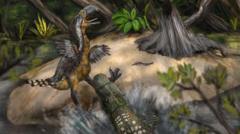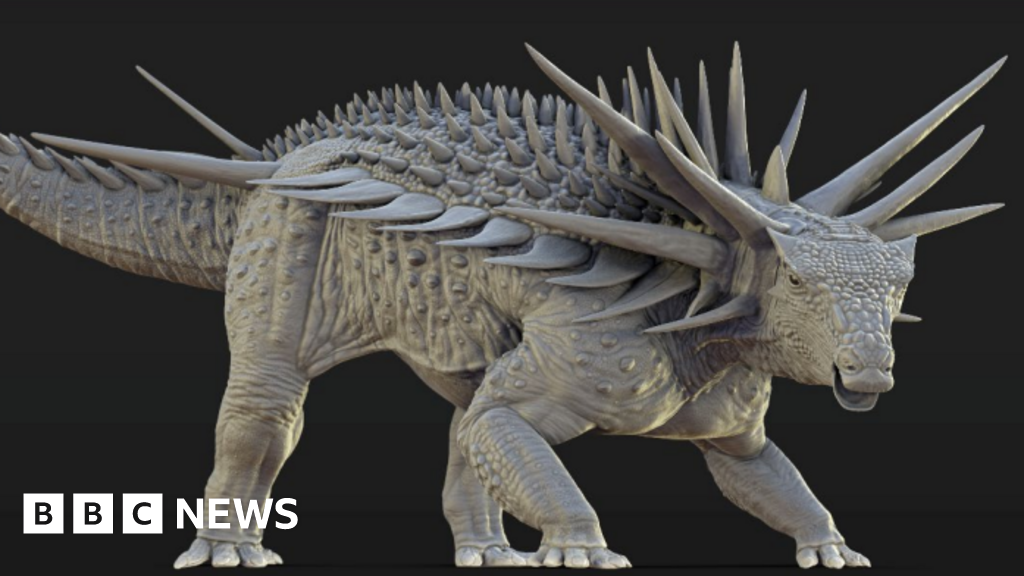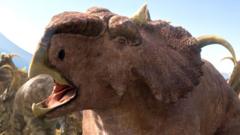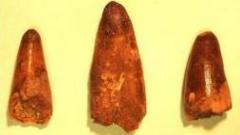Teeth marks unearthed from the fossilized leg bone of a terror bird indicate a brutal confrontation with a larger reptilian predator, suggesting the bird did not survive the traumatic encounter. These terror birds, towering avian reptiles, were characterized by their robust limbs and sharp, hooked beaks, making them formidable hunters in their ecological niche.
A team of paleontologists from Colombia conducted a comparative analysis of the bite marks found on the fossilized leg bone, matching them to the dental records of ancient caimans, crocodilian reptiles known for their predatory nature. Their findings were published in the journal Biology Letters, adding essential context to the competition between top predators in prehistoric environments.
The fossilized leg bone, originally discovered over 15 years ago in Colombia's Tatacoa Desert, provides invaluable insight into life 13 million years ago, a period characterized by humid swamps where such thrilling predatory dynamics unfolded. The terror bird would have reached a height of approximately 2.5 meters, preying on smaller animals with its strong legs and lethal beak, illustrating its role as a dominant predator of its time.
Despite not being able to definitively conclude if the terror bird succumbed during the clash or if its remains were feasted upon later, the absence of healing signs on the bone offers strong evidence of a fatal encounter. Lead researcher Andres Link from the Universidad de Los Andes remarked, "That was the last day that bird was on this planet - then a piece of its leg bone was found 13 million years later."
The fossil evidence emphasizes that the terror birds were perhaps not as invulnerable as once thought, revealing vulnerabilities within even apex predators. The research also showcases the efforts of local fossil collector César Augusto Perdomo, who helped trace the origins of the bone and supported the current study, contributing to our understanding of these majestic creatures and their environments.
Link and his team determined that the teeth marks closely matched those of the Purussaurus neivensis, a gigantic caiman species that could potentially grow to five meters long. This reinforces the notion of a fierce predator-prey relationship, where gigantic ambush predators held sway in the aquatic environments of the time.
"Every piece of a body helps us to understand so much about life on the planet in the past," Dr. Link concluded, underscoring how the study of a single, small bone can illuminate vast and complex narratives about prehistoric ecosystems and their interactions.











